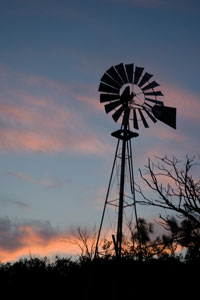
Behind Agriculture
Story and Photo by Keisha Yarbar
Many people have opinions about agriculture. These opinions differ on whether today’s farms are corporations or family businesses. A book about the history of farming and ranching in Texas, written by two Texas Tech University graduates, may be able to put some of the questions and fallacies about agriculture to rest.
Samantha Borgstedt is one of the authors of the book “Agriculture on the High Plains of Texas.” Borgstedt graduated from Texas Tech with bachelor’s and master’s degrees in agricultural communications. Borgstedt’s family raises cattle and grows cotton and wheat. She is the communications director for the Cotton Economic Research Institute at Texas Tech, the Larry Combest Chair and Dow Chair for Agricultural Competitiveness and the Texas Alliance for Water Conservation.
The co-author of the book, Dr. Darren Hudson, is the Larry Combest Chair of Agricultural Competitiveness, and Director of the Cotton Economic Research Institute. He is a professor at Texas Tech who teaches agricultural economics and has an agriculture background as well.
Both authors of the book found their inspiration to do so by writing newsletters that profiled producers. They realized that some agricultural-based businesses still had a family-based appeal. This created a powerful foundation for the book.
“We wanted to get the message out that agriculture is still family-oriented and not just huge corporations with no personal face to them,” Borgstedt said.
“Dr. Hudson and I wanted to convey that there is a continuation of family-oriented people working hard, getting their hands dirty, and their faces sunburned to make sure people have food and clothing,”
Borgstedt said.
As they began writing the book, the media were attacking the Farm Bill and the agriculture industry by indicating that the industry is corporately owned with individuals getting rich because of government subsidies. Borgstedt said the media were reporting that farmers make an abundant amount of money, but not how much it costs to operate a farm. These families are often third or fourth-generation farmers or ranchers. These farmer’s parents, grandparents, and even great-grandparents supported families by farming, and some decided that this lifestyle is how they want to provide for their own family.
“There’s been a misconception in the public and media about what farms are,” Hudson said. “The fact is that about 95 percent of farms in the United States are owned by individual families.”
The book illustrates the diversity of producers, the types of crops grown and the types of businesses that support agriculture. Borgstedt said that agriculture is the basis for the economy in many of the small towns in Texas, and without agriculture, people would not have food on the table and clothes on their back.
These products come directly from the blood, sweat, tears, late nights, early mornings, sore bodies and souls of hard-working families. These families sustain the true American agricultural industry as well as what sustains the families who need the products. The message that the book is trying to convey to Americans is that the food and clothing used by millions of people every day comes from generations of families that have worked their entire lives.